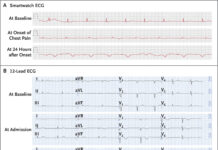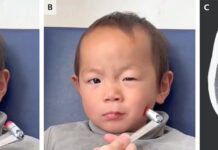This case highlights tissue necrosis in a 46-year-old drug addict because of chloroform perforation.
A 46-year-old male patient with history of drug abuse presented to the dental clinic with tissue necrosis because of chloroform perforation. The patient had been abusing drugs for the past 15 years. According to the patient’s dentist, he was undergoing a root canal treatment (RCT) for his upper central, lateral incisor and canine when the gutta-percha perforated the canal of the lateral teeth during cavity preparation.
Gutta percha (GP) has been used as a root canal filling material for many years. Moreover, in case of gutta-percha perforation, chloroform is the most efficient solvent for removal in re-treatment cases. However, chloroform is toxic and carcinogenic. It can cause necrosis in supporting bone and tissues.
To dentist decided to retrieve the GP from the periodontal ligament space by means of Chloroform, without anaesthesia even though he was aware that it may leak through the perforated site. While this was being done, the patient did not feel any pain, nor any unpleasant feeling. He was discharged in the morning, however, returned to the clinic with a large missing zone in his buccal gingiva. He was immediately referred to an endodontist for solving the problem.
Examination showed a large necrotic area surrounding the upper lateral incisor
On examination, a large necrotic area could be seen surrounding the upper later incisor (Figures A and B). In addition, there was a large longitudinal perforation on the mesial wall of the root of the lateral incisor. The patient felt no pain or irritation. Moreover, also reported that he underwent a medical surgery without anaesthesia years before also. The endodontist performed a nonsurgical re-treatment of upper central incisor (Figures C and D).
For evaluation, the patient was advised a Cone Beam Computed Tomography (CBCT) which revealed a long perforation on coronal half of mesial wall of upper left incisor (Figure E). The lateral incisor was extracted and the area was re-encountered during flap surgery. The extracted tooth revealed a longitudinal perforation (Figure F). The patient was advised a fixed partial denture after gingival healing (Figure G).
References
Tissue Necrosis due to Chloroform: A Case Reporthttps://www.ncbi.nlm.nih.gov/pmc/articles/PMC4004793/




